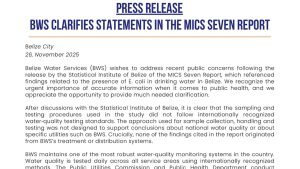Invasive Armoured Catfish Threaten Belize’s Waterways, Experts Warn
The armoured catfish, also known as the devil fish, has been causing serious ecological problems in Belize’s rivers for over a decade. Originally from South America, this invasive species has already wreaked havoc in waterways across Florida and Mexico, and now it poses a growing threat to Belize’s aquatic ecosystems.
The Belize Maya Forest Trust has raised concerns as sightings of the armoured catfish increase. The fish not only compete with native species for food but also erode riverbanks and disrupt the natural flow of water, causing long-term damage to the environment.
Dr Elma Kay, Managing Director of the Belize Maya Forest Trust, explained the urgency of the situation. “We have been managing this reserve for about four years now. When we were constructing our conservation action plan, we flagged the invasive armoured catfish as a species of concern for our ecosystem,” she said.
Dr Kay said it is important to protect Belize’s waterways, which are part of the largely intact Rio Ono watershed. “These are systems that are in imbalance and healthier because they are protected. So having an invasive species is of concern.”
She detailed why invasive species like the armoured catfish are especially damaging. “Because the very fact that we are calling them invasive means that they’re hardy, that they can take over. What does ‘taking over’ mean? It means that they can displace our native species. They can transform the creek system or the river system for species that, because they are species that don’t belong there, can change the system.”
This disruption can have a cascading effect on the ecosystem. “For example, other fish might lose access to the food they need,” Dr Kay explained. “It disrupts that food chain.”
Addressing concerns about whether the fish could be a resource, Dr Kay was cautious. “You might ask, ‘Well, what does that have to do with us? Maybe this is a fish that we can eat or commercialise, and maybe those are things that will have to happen with this fish because we might not be able to stop the invasion.”






Facebook Comments